Click the exhibit.

A Carrier Supporting Carrier (CSC) VPRN is configured for a customer carrier who is a BGP/MPLS service provider. Which route is present in PE1's global routing table?
For Carrier Supporting Carrier (CSC) VPRN, which of the following is NOT applicable to both types of customer carriers: BGP/MPLS service providers and Internet service providers?
Which command may be used on an Nokia 7750 SR to verify the number of VRF routes allowed, based on the maximum routes value configured in the service instance?
Why would a selective export policy be applied to a customer VPRN service? (Choose three)
A CE hub and spoke VPRN has two spoke sites; which of the following would be the best option to implement this topology at the hub site PE?
The policies shown below from the configuration of an Nokia 7750 SR have been created to implement an Extranet VPRN between the main sites of two separate VPRNs. How should these policies be applied?
What is the minimum number of Route Distinguishers required to implement an overlapping VPRN involving 5 different customers?
Click the exhibit.
A Carrier Supporting Carrier (CSC) VPRN is configured on an Nokia 7750 SR for a customer carrier who is an Internet Service Provider (ISP). Which of the following configuration steps is NOT required?
Click the exhibit.
Which of the following commands produces the output for the inter-AS model B VPRN?
What are the two primary problems the service provider must consider when providing traditional Layer 3 VPN services using only a single common routing table in the provider core? (Choose two)
When a routing protocol is configured as the PE-CE protocol at one site of a customer VPRN, the same routing protocol must be configured as the PE-CE protocol at all other sites of the same customer VPRN.
Complete the following statement. In a VPRN, the label signaled by RSVP-TE is used to ______________.
Click the exhibit.
What is wrong with the VPRN configuration applied on this Nokia 7750 SR?
Click the exhibit.
A Carrier Supporting Carrier (CSC) VPRN is configured for a customer carrier who is a BGP/MPLS service provider. If CE1 sends an IP packet to 192.168.200.1, which of the following is FALSE?
Click the exhibit.

A Carrier Supporting Carrier (CSC) VPRN is configured on an Nokia 7750 SR for a customer carrier who is an Internet Service Provider (ISP). Which of the following configuration steps is NOT required?
Community lists are configured for the PE hub and spoke VPRN.
Which communities should be imported by the VPRN service on PE1?
Click the exhibit.

For the PE hub and spoke VPRN, which communities should be imported under the VPRN service on PE2?
In a VPRN that uses MPLS transport tunnels, which of the following is NOT configured on the PE device?
Click the exhibit.
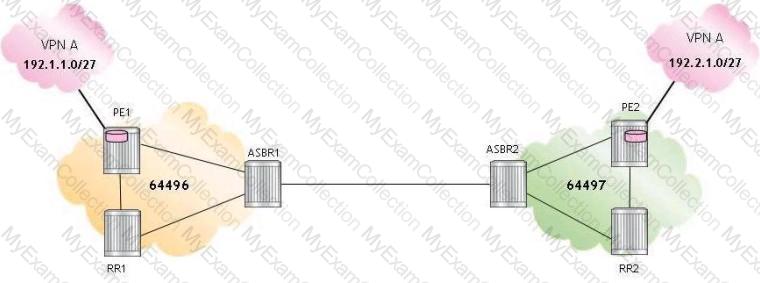
Routers RR1 and RR2 are configured as route reflectors. For the inter-AS model C VPRN, which of the following about the VPN-IPv4 route advertisement is FALSE?
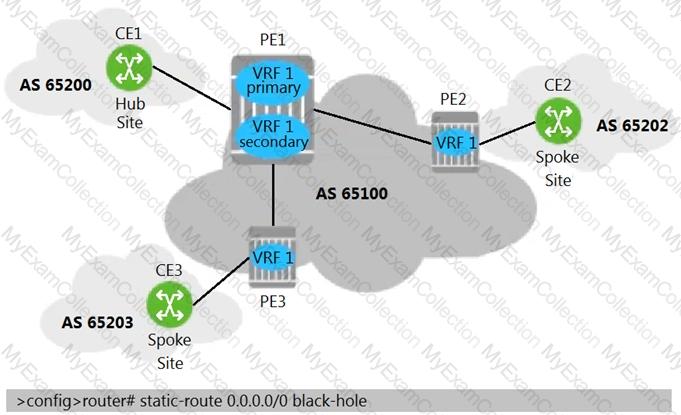
To enable full spoke-to-spoke connectivity for the CE hub and spoke VPRN, on which router(s) should the displayed static-route be configured?
For a Carrier Supporting Carrier (CSC) VPRN where the customer carrier is an ISP that provides Internet connectivity to its end-customers, which of the following is TRUE?
What operation does a P device perform when it receives a labeled packet for a VPRN service?
Click the exhibit.
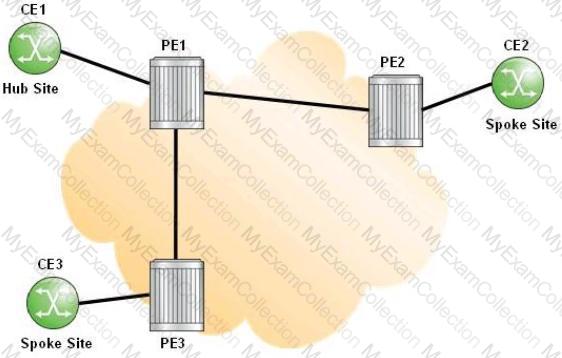
For the CE hub and spoke VPRN, which of the following is FALSE?
Click the exhibit.
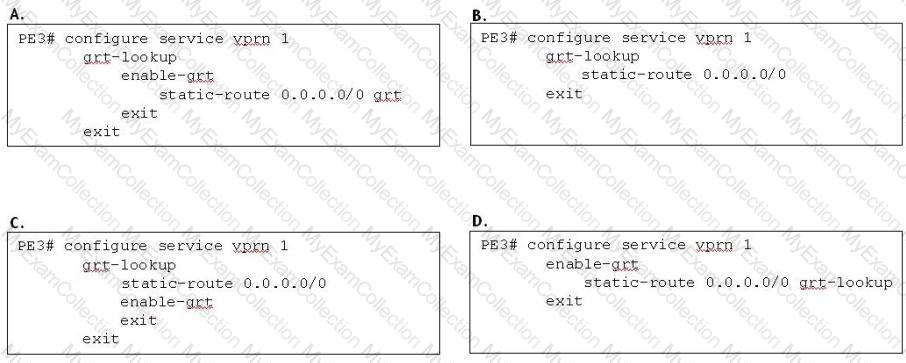
When configuring the double lookup functionality, which configuration forces the global routing table to be consulted for any packet matching the VPRN default route?
Click the exhibit.
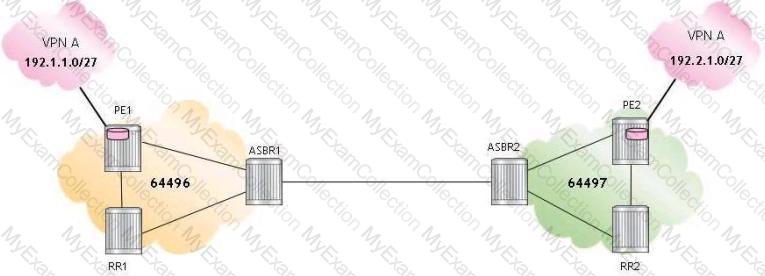
For the inter-AS model C VPRN, which of the following is FALSE when an IP packet is sent from 192.1.1.1 to 192.2.1.1?
Click the exhibit.
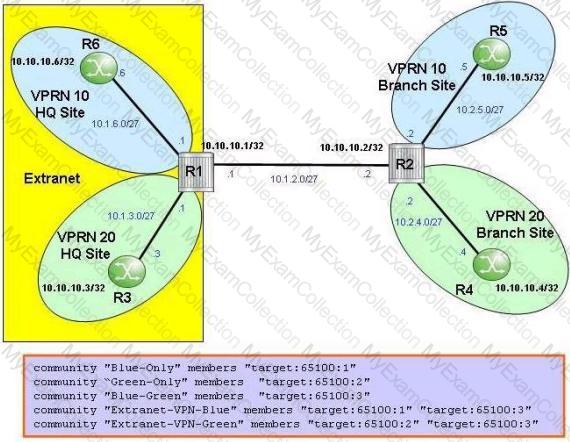
The headquarter sites of VPRN 10 and VPRN 20 are part of an extranet VPRN. Which route targets should be exported under the VPRN 20 service on router R1?

